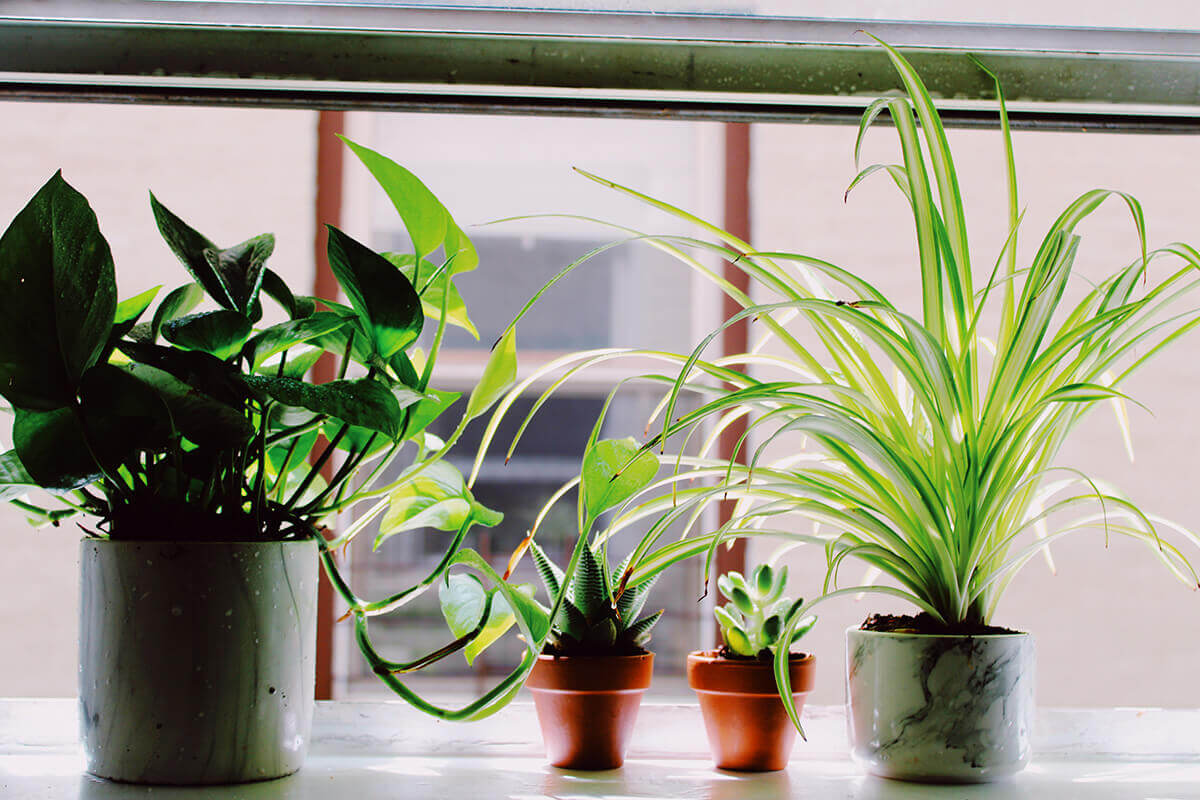Let’s face it. We’ve been stuck inside for months now due to the Pandemic. Our favorite plant conservatories and garden green homes have closed for the public and we can literally feel ourselves wilting along with our plant friends. A great way to cure this cabin fever is by bringing the outside world into your home. The indoor gardening movement has grown at a rapid rate before our eyes, which we can see in the form of Instagram accounts dedicated specifically to plants. However, before you rush out and buy more plants than your water bill can handle, read these 6 common mistakes that new plant owners make.
1. Inconsistent Watering
Overwatering plants is surprisingly very common, even for expert green thumbs. After you post your new plant child to your Insta feed you may find yourself staring at your new plant baby throughout the day, admiring its fashionable and strategic placement. Like a new parent, you want to care for your plant child… so you water it… and you water it again… and it’s now been only one day but you’ve somehow watered your plant 6 times and it does NOT look okay. You’ve now, like an overbearing parent, smothered your child. On the flip side, your plant needs more than cute selfies of itself to survive, so make sure you’re watering it enough. It’s a delicate balance. Always do research on your plant to ensure that its needs align with your level to care and capacity to care for it. There’s a plant out there that suits all of your caring needs, you just have to find the perfect fit for your lifestyle.
2. Lack of Draining Holes
We all get really excited to bring home brand new plants and have them spruce up the joint. New plant parents often immediately uproot/remove their plants from their nursery pot upon arriving back at home. The plant child is then dropped directly into an artisanal pot that is camera ready. But! This aesthetic pot has no drainage holes. Draining holes are essential to the health of your plant. If a plant is in a pot without drainage holes the water will end up sitting at the bottom of the pot and suffocating the roots of your plant. This poor filtration system can lead to root rot and other common plant diseases or root issues. You can get away with using that drainage free pot, but you should include gravel or stone below the soil to increase drainage and prevent your plant from drowning. Also, there’s plenty of stores that sell fancy draining pots that will match perfectly with your desired aesthetic.
3. Lighting your Plant Badly
Just like you wouldn’t post a backlit selfie, plants have certain lighting preferences as well. House plants thrive in bright conditions, but you should never have them sitting in direct sunlight. Direct sunlight can burn and scorch the leaves of your plant and leave you with a not so cute looking plant. There are very few plants that can take direct sunlight. Along the same lines, there are a number of plants that can’t tolerate low light. Research your plant’s specific needs and when pondering what to do, stick to indirect sunlight. Everyone, including plants, loves the soft light that golden hour brings, so give them that glow 24⁄7.
4. Immediately Repotting your Plant into a Larger Pot
A good rule of thumb is to repot your plant every 12-18 months. Your plant is now your literal child and you have to make sure they don’t have ill-fitting clothes. When you do repot, you don’t want to go any larger than 2 inches in diameter. In a too-large pot, soil dries slowly, making your plant more susceptible to root rot. You also don’t want to pile the soil any higher than in the previous pot. Your plant needs space to grow and they can’t get that if they’re trapped under mass amounts of soil.
5. Ignoring Plant Hygiene
Just like a baby, you are in charge of your plant’s hygiene, since they can’t do it themselves. A lot of new plant parents–and old plant parents–don’t realize that clean leaves help your plant thrive. Photosynthesis is the process that helps plants feed themselves and without proper plant hygiene, your plant can have trouble with this natural process. It takes only a few weeks for a thick layer of dust to form on the top of the leaves. This interferes with your plant and makes your plant look less than desirable on camera. Cleaning your plant of the dust on its leaves not only helps your plant thrive, but can also help you fend off pests… Which is our next most popular problem.
6. Ignoring Pest Problems
Pest problems are fairly common no matter what environment you have your plant living in. Whether indoor or out, pests can find a way into the soil of your plants. These pests could have been on your plant when you purchased it or may have been found in the potting mix you used transferring your plant baby to a larger crib. Pests can even make their way in through open doors or mesh screens. These issues should be nipped in the bud immediately since these pests can spread to other plants and be the demise of patient 0. Pests often have the appearance of mold and are easy to spot if you know what you’re looking for.
Conclusion
Always do research about your plants before you bring them home. We all want the next trendy plant to live in our home, specifically in our poorly light living room next to our mesh screen door and gallon watering can. This setup could end in heartbreak. Keep the steps above in mind when filling your home with plants and have fun!
